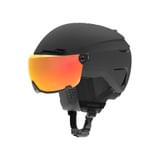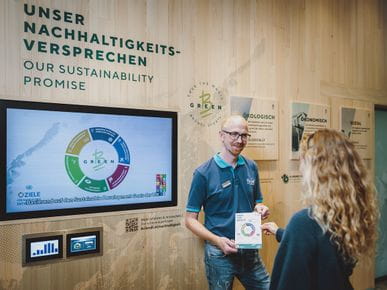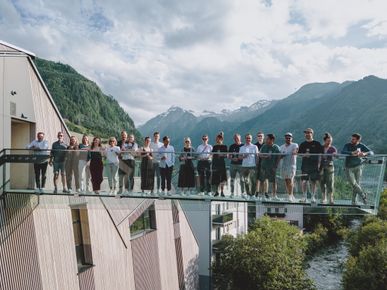Atomic's Approach to Sustainability
Atomic's Approach to Sustainability
Atomic is as dedicated to sustainability as it is to all other aspects of performance when it comes to designing, developing, and manufacturing the world's best ski equipment.

Atomic strives to create exceptional products whose performance can be measured down to hundredths of a second. Just like a racer's time measured with a stopwatch, Atomic's environmental impact is carefully assessed and externally verified by third parties. Atomic is aligned with the goal set in the Paris Climate Agreement to limit global temperature rise to 1.5°C above pre-industrial levels. Atomic's adherence to this goal is governed by an externally verified science-based climate target (SBT) that sets the carbon emissions target for the brand. In the summer of 2022, Atomic formally began establishing an SBT.

The Path taken by Atomic
Atomic's journey towards a future with ever-decreasing environmental impact is paved by three areas of action:
- Decisive Actions: to redesign the supply chain
- Innovation: for sustainable performance
- Collaboration: for a broad-based climate movement

A Commitment spanning Decades
In the past fifteen years, Atomic has taken the following steps to reduce the environmental impact of their business practices:
2023 - Environmental Management System
Implementation of an Environmental Management System (EMS). The EMS, certified according to the international norm ISO 14001, will help improve environmental compatibility and reduce Atomic's footprint.
2022 - Life Cycle Analyses
Life cycle analyses for alpine skis, touring skis, boots, and cross-country skis. By conducting life cycle assessments in accordance with ISO 14040 and 14044 and EN 15804, Atomic has identified the potential environmental impacts of these products throughout their entire lifecycle. This enables Atomic to reduce the impacts of future developments.
2021 - Sawdust Recycling
By recycling this byproduct from ski manufacturing into particleboard, Atomic saves 18.9 tons of CO2 annually – an 84% reduction compared to wood composting.
2020 - LED Facility Lighting
Compared to 2019, the Altenmarkt plant now consumes 5% less electricity thanks to more efficient LED lighting.
2014 - Electric Power from Renewable Sources
100% power from renewable energy sources. Switching to 100% renewable energy has helped Atomic reduce their emissions by 97.45% compared to the standard electricity mix in Austria.
2013 - Heat Recovery
To bond the layers of a ski, the presses are heated to high temperatures. By recovering some of this heat, Atomic has further reduced the emissions from its plants.
2010 - Renu Boot Launch
Launch of RENU boots and skis. A boot with a cuff and shell made of bioplastic, representing Atomic's first product with an environmentally friendlier design and construction.
2005 - Heating with Biomass
Switch from heating oil to local wood-chip heating. 6.39 GWh/year now sourced from renewable sources. Using local wood chips instead of oil for heating the ski presses has led to a 95% reduction in CO2 emissions, keeping over 2,176 tons of CO2 out of the atmosphere.
Innovation for Sustainable Performance
Atomic follows a clear set of design principles for reducing carbon emissions
This process always begins with product lifecycle analyses (LCAs) to define influencing factors and guide redesigns. This has taught Atomic that the most obvious measures are not always the most effective. Atomic believes that product performance and durability must not be compromised, as these attributes contribute to sustainability through a longer product lifespan.






